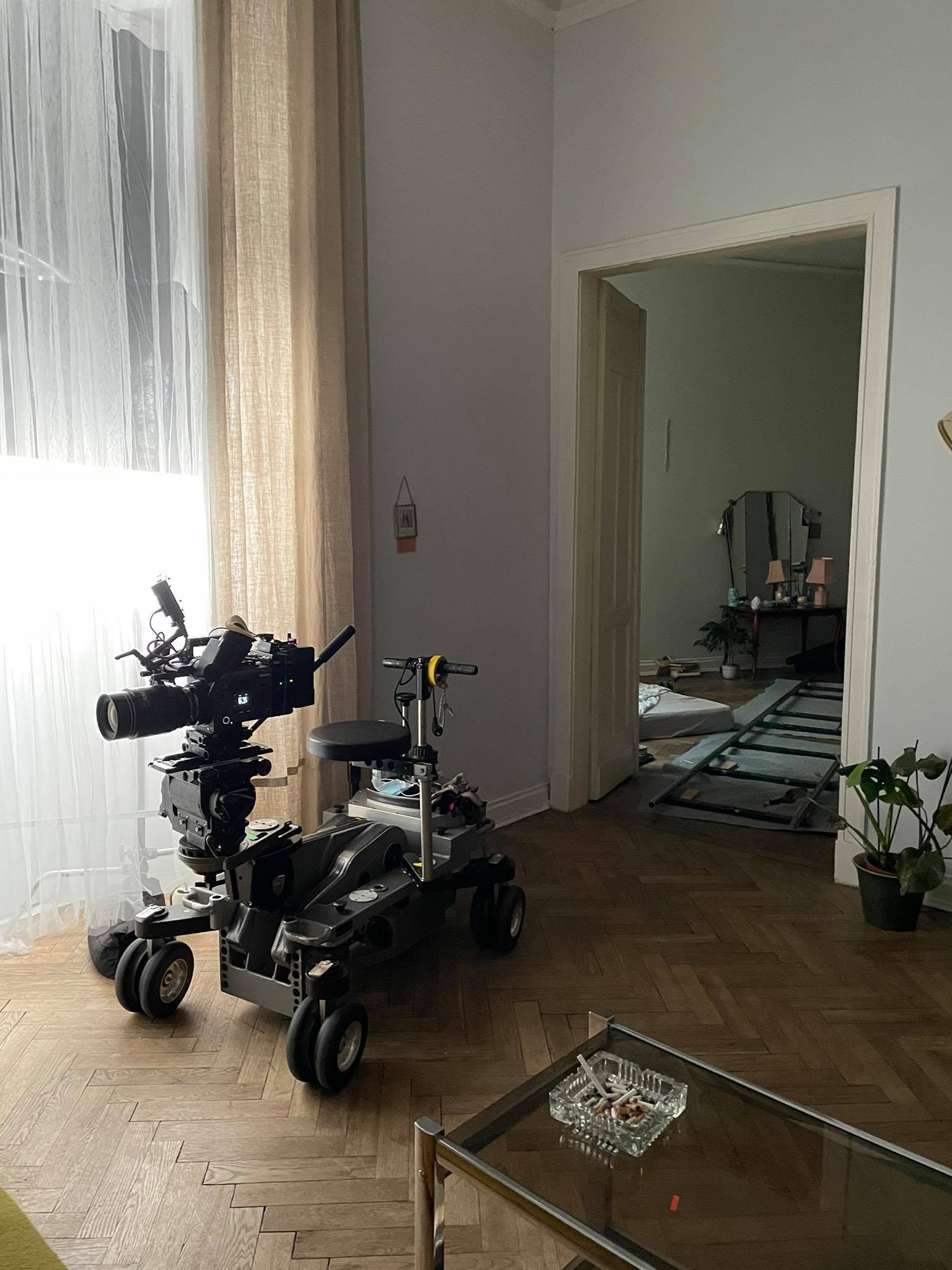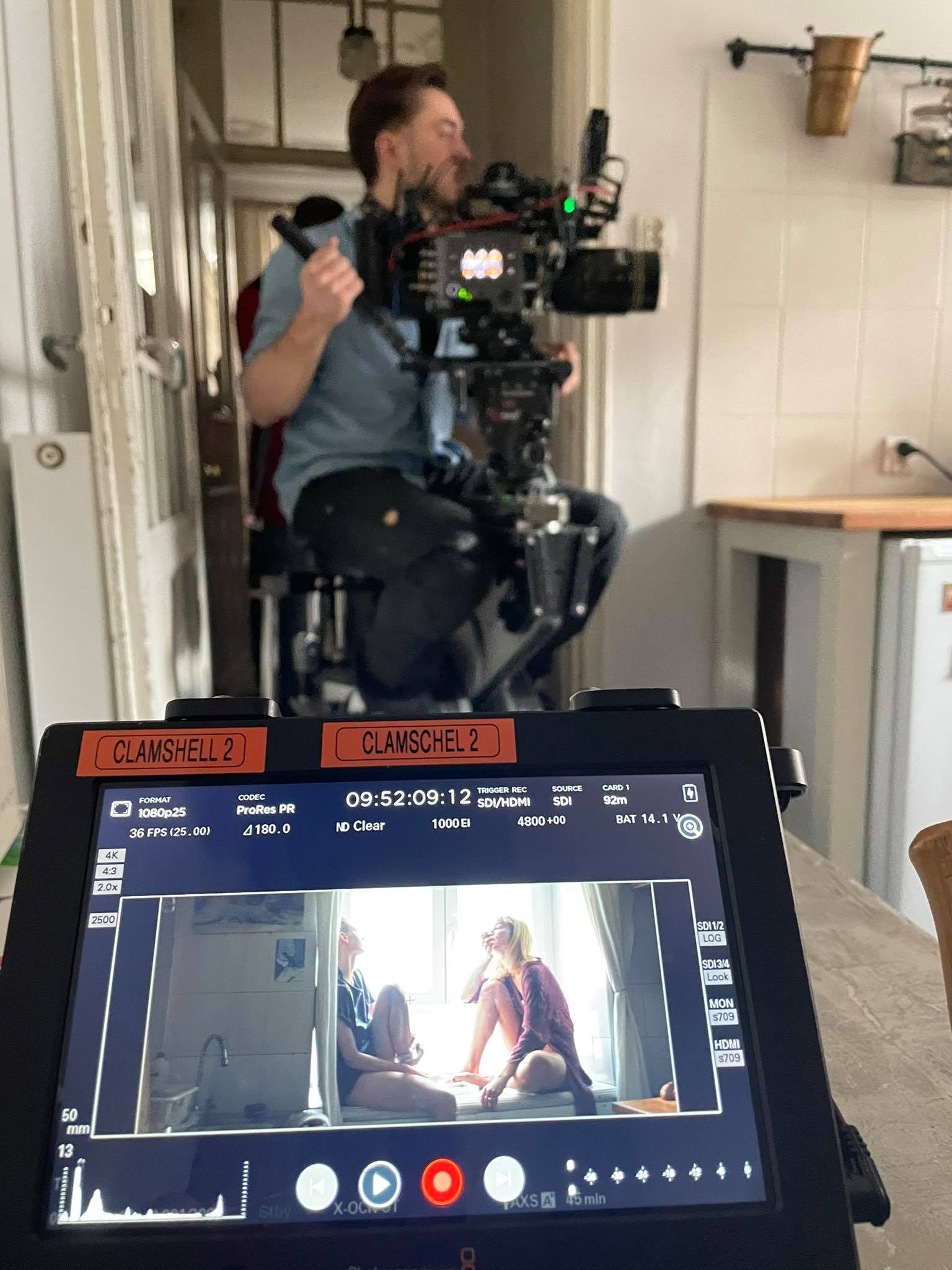
The lines between fantasy and reality are vividly blurred in Kilo, a smartly-shot music video from Filip Zaluska which matches the high-tempo tone of Polish duo RYSY’s thumping techno music. With shots often doubling from different perspectives, interlaced with frantic cuts and rapid zooms, we see a relationship in both its ideal state and its bitter comedown, providing a frank portrait of modern love. We caught up with the Warsaw-based director and DN alumni for a chat about working on the film while the song was still being composed, matching cuts from different angles, changing the gender of the lead and the need for LGBTQ stories in the central European country.
A heads up, there are some NSFW images in here.
You’ve worked with RYSY before on The Fib. Tell me how the collaboration came together.
They sent a very work-in-progress piece of music. It was changing while I was trying to imagine the music video, compose everything and write a script. When I had something they then sent me another version which was different. But I think it was very good because I was open and they were open, so it was a very close collaboration in the very early stage.
In the same moment there could be different subjective worlds for everyone.
Did you have the idea for the film while listening to the song or was this something you wanted to explore already?
I had a small idea of how to say this from my previous video, which was not even released. I used a kind of editing which combines two worlds in one. I thought this is interesting because we can go this way and see how parallel worlds can be matched together in one and people from different worlds can see each other in one. So I had the idea and the music fit smoothly to it.

The song is visceral and high-tempo. Did you want to create something that would match this tempo?
You have to use your intuition when you hear the music. It shouldn’t be like you have a fast tempo then you have to have fast-changing frames. It depends on your ideas and feelings about the music. Here the theme was so strong that it matched these rapid frames, but it shouldn’t always. It depends on your intuition.
For me the relationship at the heart of the film feels like a projection, especially in the way people appear and reappear in a similar shot. Did you want to create this feel?
I imagined that in the same moment there could be different subjective worlds for everyone. You are with someone but at the same moment you are alone. Maybe there are three worlds, where one person isn’t in one and another is in another and a third world where nobody is there. That was the starting point for this.

I loved the use of zooms in the film. What was the idea behind these rapid camera movements?
I made a test first which told me I should change as many frames as possible. From a wide shot to a head shot is best when you edit it in similar shots. I tried on set to use the dolly as much as possible to get close to the actors. When it wasn’t possible, I used the zooms. For example, in one shot I started with the wide angle with the dolly as close as possible to their faces, then I repeated the shot without actors to feel these changes. In essence, matching two shots together is best when you have that change in perspective and frames. The zooms enhanced and made it more powerful.
Tell me about the two stars of the film and the casting process?
In the beginning the story was about a man and a girl. But my girlfriend showed me Magdalena Gorzelańczyk, the actress with short hair. When I saw her it was like: “Wow, she should act in it and replace the man.” I changed the story so it was a relationship between two girls, with the second who is more like a man, less sensitive from the outside. I knew Martyna Wróbel from before as I had a class that teaches people who would like to make a music video. I was just there supervising and found her very interesting. Something in her is crazy sensitive and her body is very strong and very big. I remember her well from this and called her to join us on the shoot.

So you didn’t intend for it to be a lesbian story. Did anything have to change when the lead changed gender?
Not truly. It was like it should be. Everything that I changed before was natural.
I received a lot of congratulations on Facebook from women who thanked me for this work.
Given the current climate for LGBTQ people in Poland, especially in the east, do you think it’s important to tell these stories?
What is the response, right? Warsaw is a big city. For us living here, you don’t feel this pressure so much. But there is because we have a far-right government in Poland and they make politics attacking minorities. So I felt that it’s good how it is in my story. For me, it’s about love, but the second layer is these two girls. I received a lot of congratulations on Facebook from women who thanked me for this work. For them it’s important and it is important for me that it was something for them.





You have a background as a DOP, but in this film Szymon Kuriata is your cinematographer. When you are directing do you remember to stand off or do you give lots of guidance to your DOP?
It’s not easy, because I’ve been working for ten years as a DOP. But I met Szymon as he was in the Papaya Young Directors competition. He is very young but I felt that’s OK. I talked with him and felt his sensitivity. He’s also very good technically. If something goes in the wrong direction I know I can change it to my vision.
What are you working on next?
Two projects. Next month I’m shooting a short with my best friends as a DOP. In the next three months I’m shooting my debut, a short 15 minutes, but it will be my script and my movie. I wrote it during lockdown. It is about making ourselves free from overpowered mothers and when the mother doesn’t want to let the child go when it grows up. This is also about love, but toxic love.


